Introduction
Choosing and using a 50-foot extension ladder requires careful consideration and adherence to safety protocols to ensure efficiency and prevent accidents. This guide delves into the essential aspects of selecting the right ladder, including material and weight capacity, and emphasizes the importance of pre-use inspections and regular maintenance. Proper setup and safe climbing techniques are outlined to mitigate risks, while specific considerations for handling such tall ladders, especially in challenging conditions, are highlighted.
The article underscores the necessity of complying with OSHA regulations and provides insights into effective training programs for ladder safety. By understanding common hazards and how to avoid them, users can significantly enhance their safety and productivity on the job site.
Selecting the Right Ladder
When choosing a 50-foot extension device, it is essential to assess the material, weight capacity, and type to ensure it fulfills your requirements effectively. Aluminum steps are particularly advantageous due to their lightweight nature and resistance to corrosion, making them a preferred choice for many professionals. Additionally, modern extension devices are designed with safety in mind, featuring non-slip feet and stabilizing bars to minimize accident risks. It's important to select a climbing apparatus with a weight rating that can support both the user and the tools or materials they will carry. Investing in a high-quality extension tool not only enhances accessibility for tasks like painting or roof repairs but also ensures durability and cost-effectiveness, making it a valuable asset for small businesses.
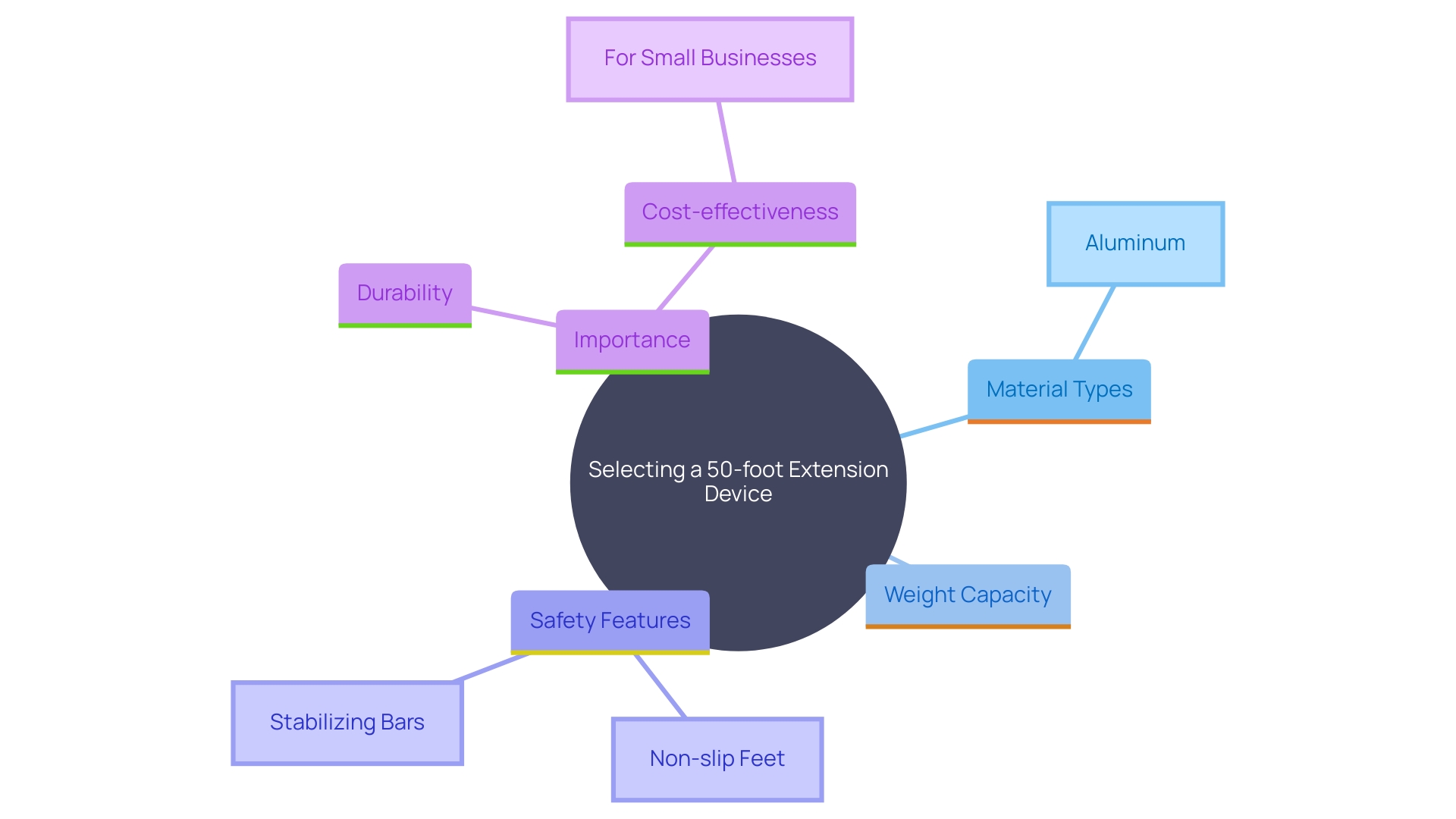
Pre-Use Inspection and Maintenance
Before utilizing an extension device, it is essential to perform a thorough examination to guarantee security and dependability. Begin by inspecting the equipment for any indications of damage like cracks, bends, or corrosion, which could jeopardize its structural integrity. Verify that all locking mechanisms are fully functional to prevent accidental collapses during use. Consistent upkeep is essential for the durability and security of the equipment; this involves periodic cleaning to eliminate grime and clutter, and applying lubricant to moving components to guarantee seamless functionality. Adopting these practices not only improves safety but also prolongs the lifespan of the tool, making it reliable for various tasks.
Setting Up the Ladder Safely
Setting up a 50-foot extension structure begins with positioning it on stable, level ground. Following the 4-to-1 guideline is essential: for every four feet of height, the base should be one foot away from the wall. This guarantees a safe and secure angle, minimizing the risk of the structure tipping over. To further prevent slipping, secure the feet of the climbing tool properly. Ensure the equipment is fully extended and secured before ascending. Such measures align with the Occupational Safety and Health Administration's emphasis on hazard elimination and mitigation, highlighting the importance of proactive safety practices.
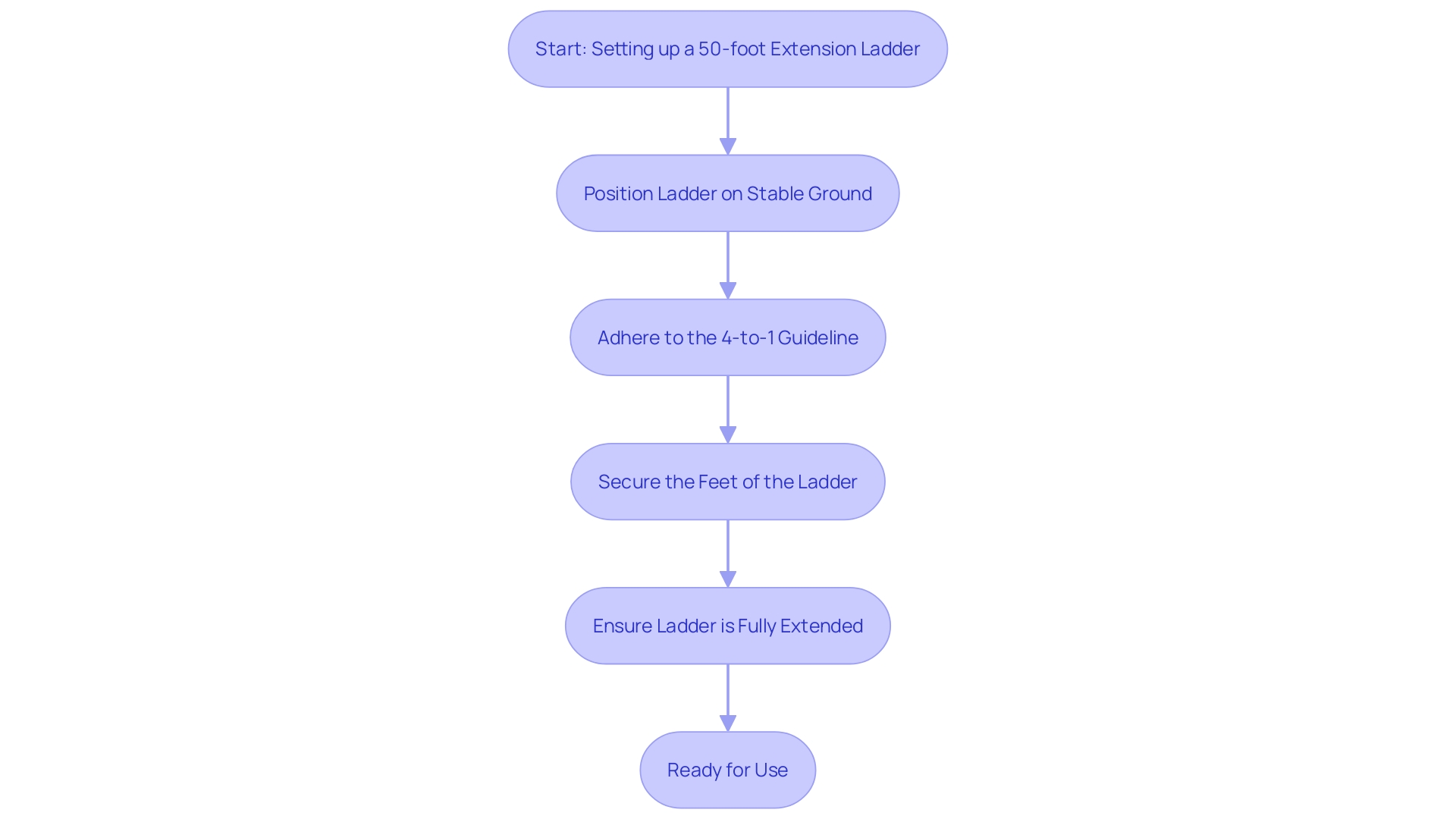
Safe Climbing and Descending Techniques
When ascending or descending a step structure, always face it to maintain balance and control. Ensure you have three points of contact at all times—either two hands and one foot or two feet and one hand. Overreaching can lead to serious injuries; instead, descend the ladder and reposition it as needed. This approach is reinforced by OSHA’s safety training, which emphasizes hazard elimination and mitigation to prevent injuries. By adhering to these practices, you can significantly lower the chance of accidents and ensure a safer work environment.

Specific Considerations for 50 Foot Ladders
When utilizing a 50-foot extension device, it's crucial to be mindful of wind conditions and ensure its stability. Strong winds can destabilize the structure, increasing the risk of accidents. Likewise, positioning the climbing equipment on uneven terrains can result in hazardous slips or tumbles. To improve security, always have someone to assist in stabilizing the equipment, particularly when operating at considerable elevations. Contemporary extension tools are equipped with features like non-slip feet and stabilizing bars, but the extra support from a spotter provides an additional layer of security. These measures not only guarantee the protection of the user but also assist in preserving the soundness of the structure, making it a dependable instrument for various tasks.
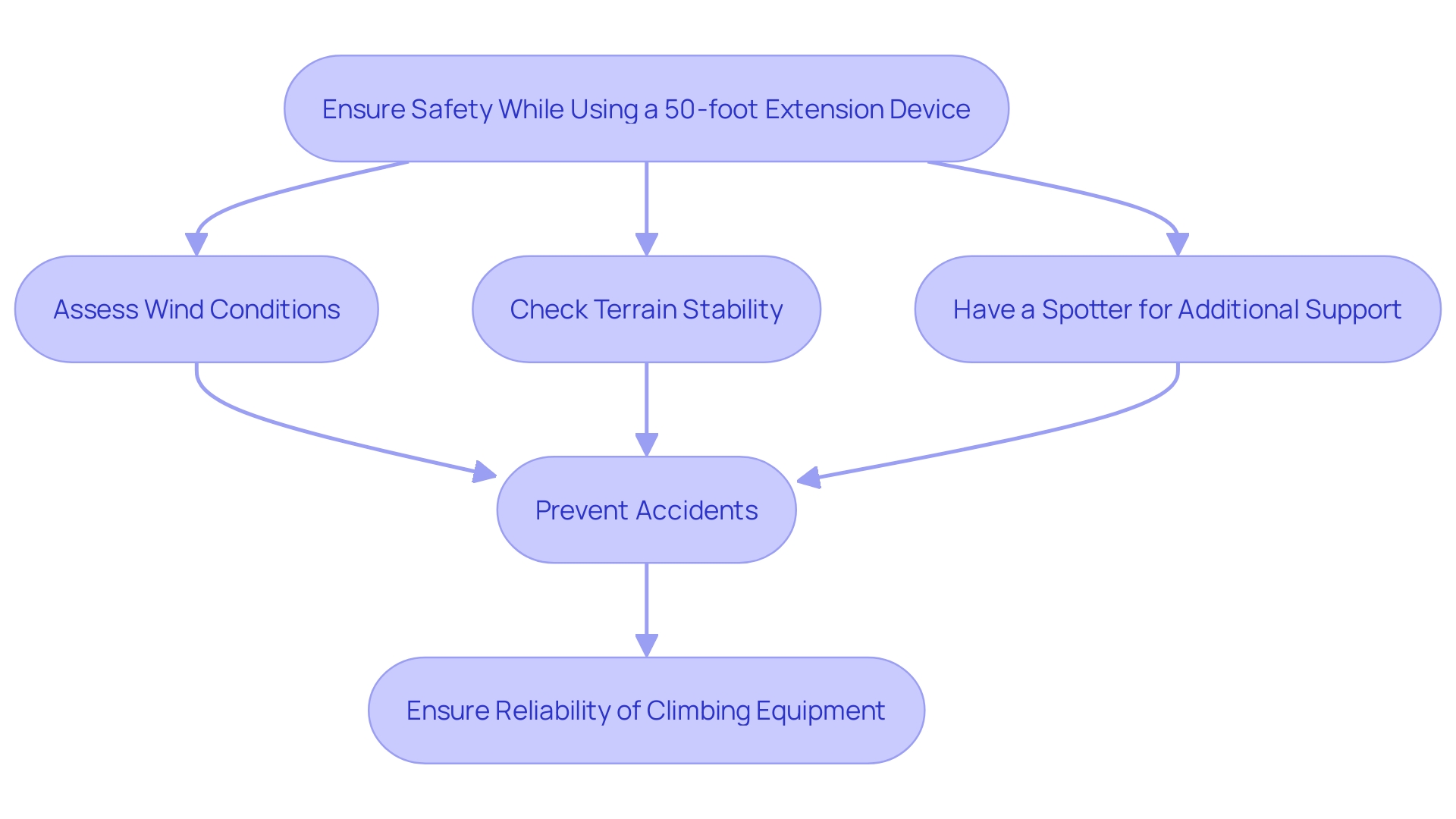
OSHA Regulations and Compliance
Comprehending and following OSHA's safety regulations for climbing equipment is essential for ensuring a safe work environment and preventing legal issues. OSHA guidelines, including those specified in section 1926.503(b)(1), require that employers must document and certify that their employees have received sufficient instruction. This instruction must be thorough and conducted by a competent individual, ensuring that all workers are well-versed in safe ladder usage.
Consistent practice meetings and adherence to these standards are essential. For instance, companies like the 3M Company, which manages extensive production facilities with thousands of employees, are required to follow stringent OSHA guidelines to mitigate workplace hazards. OSHA's machine guarding and control of hazardous energy regulations are just a few examples of how dedicated oversight is necessary to protect workers.
Furthermore, the law requires these protective measures, making it clear that preventing workplace injuries and fatalities is a legal obligation. As highlighted by OSHA's enforcement actions, companies have a set timeframe to address any citations and penalties, emphasizing the importance of immediate compliance. By emphasizing climbing equipment education and following OSHA guidelines, employers can create a more secure workplace and lessen the chance of incidents that are both foreseeable and avoidable.
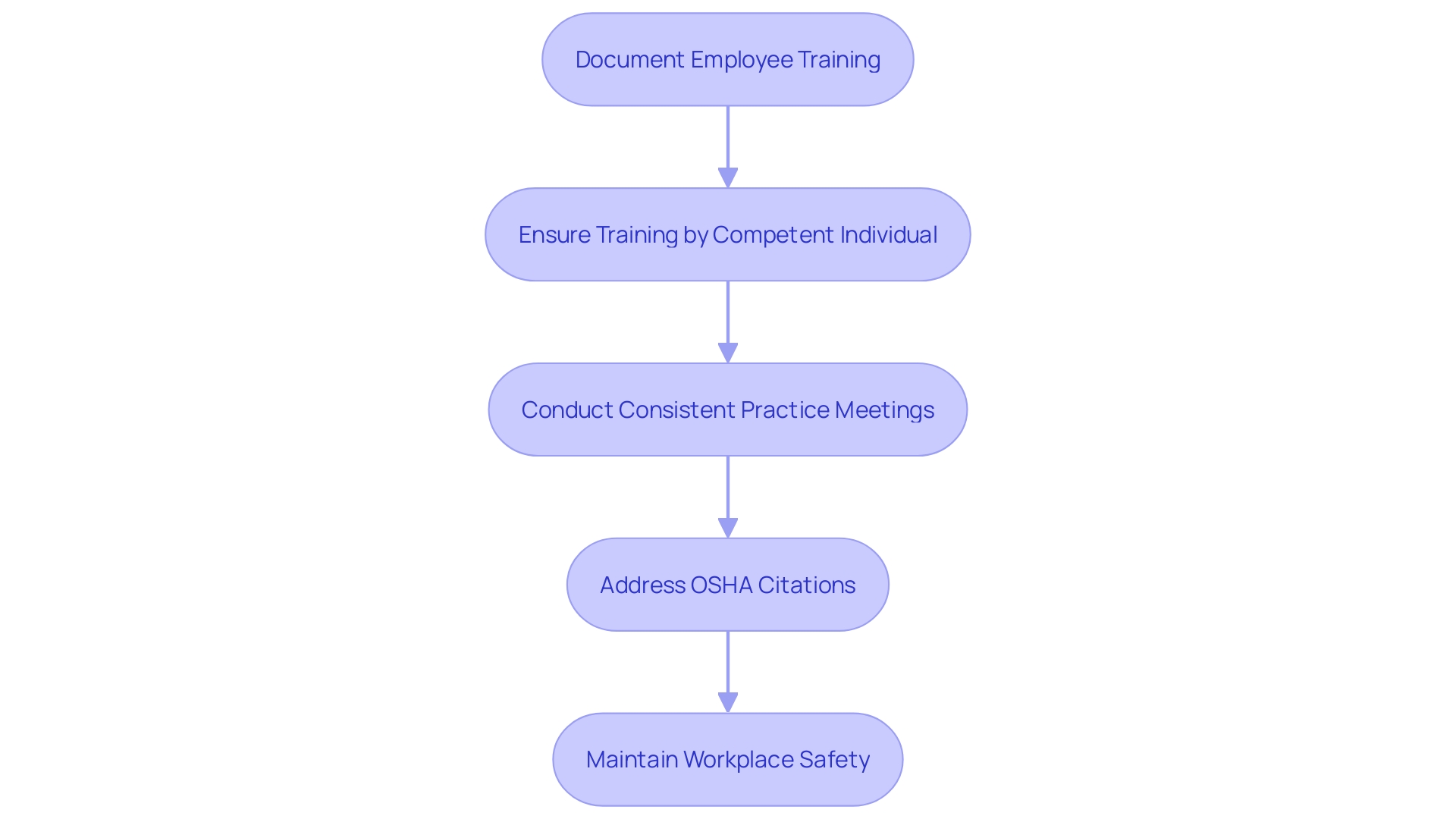
Training and Awareness for Ladder Safety
Guaranteeing that all users obtain adequate instruction is crucial for upholding security. Conducting comprehensive workshops that cover ladder safety protocols, proper usage, and emergency procedures can significantly mitigate risks. For example, LEDVANCE, a leader in general lighting, demonstrates that even complex topics can be effectively taught through well-organized instructional programs. Their method of converting courses into 15 languages highlights the significance of inclusivity and comprehension in education.
Regular refresher courses are equally crucial to reinforce safety practices. Statistics show that human error is the root cause of 80% of workplace accidents, leading to $163.9 billion in costs in 2020 alone. Carrying out continuous education guarantees that employees maintain the essential knowledge and skills to avoid accidents. According to OSHA standards, employers must verify education through a written certification record, ensuring compliance and accountability. By prioritizing training, organizations can create a safer work environment and lower the chances of costly accidents.
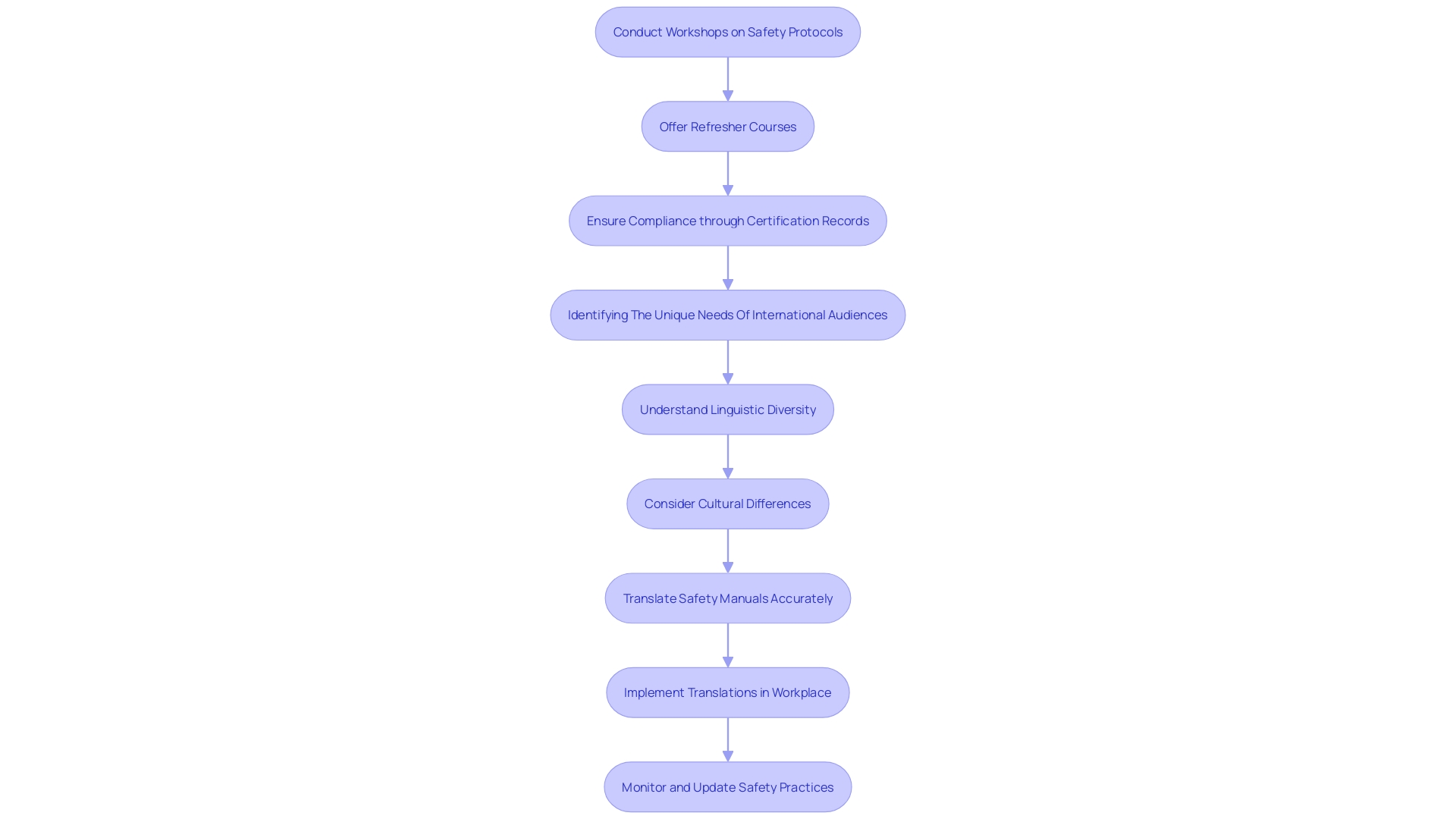
Common Hazards and How to Avoid Them
'Slipping, falling objects, and improper use of scaffolding are some of the most common hazards encountered on construction sites.'. To reduce these dangers, ensure that the space around the step structure is free of impediments and tripping threats, such as electrical cords and hoses. Secure all tools and materials properly to prevent falling objects, which are a major cause of workplace injuries. Training all users in safe ladder practices is crucial. Implementing a comprehensive risk management plan that uses established controls can help in identifying and mitigating potential hazards. According to WorkSafeBC, slips, trips, and falls account for approximately 20 percent of workplace injuries annually, with nearly 7,000 workers affected each year. Thus, proactive measures and proper training can significantly reduce these incidents and improve overall site safety.
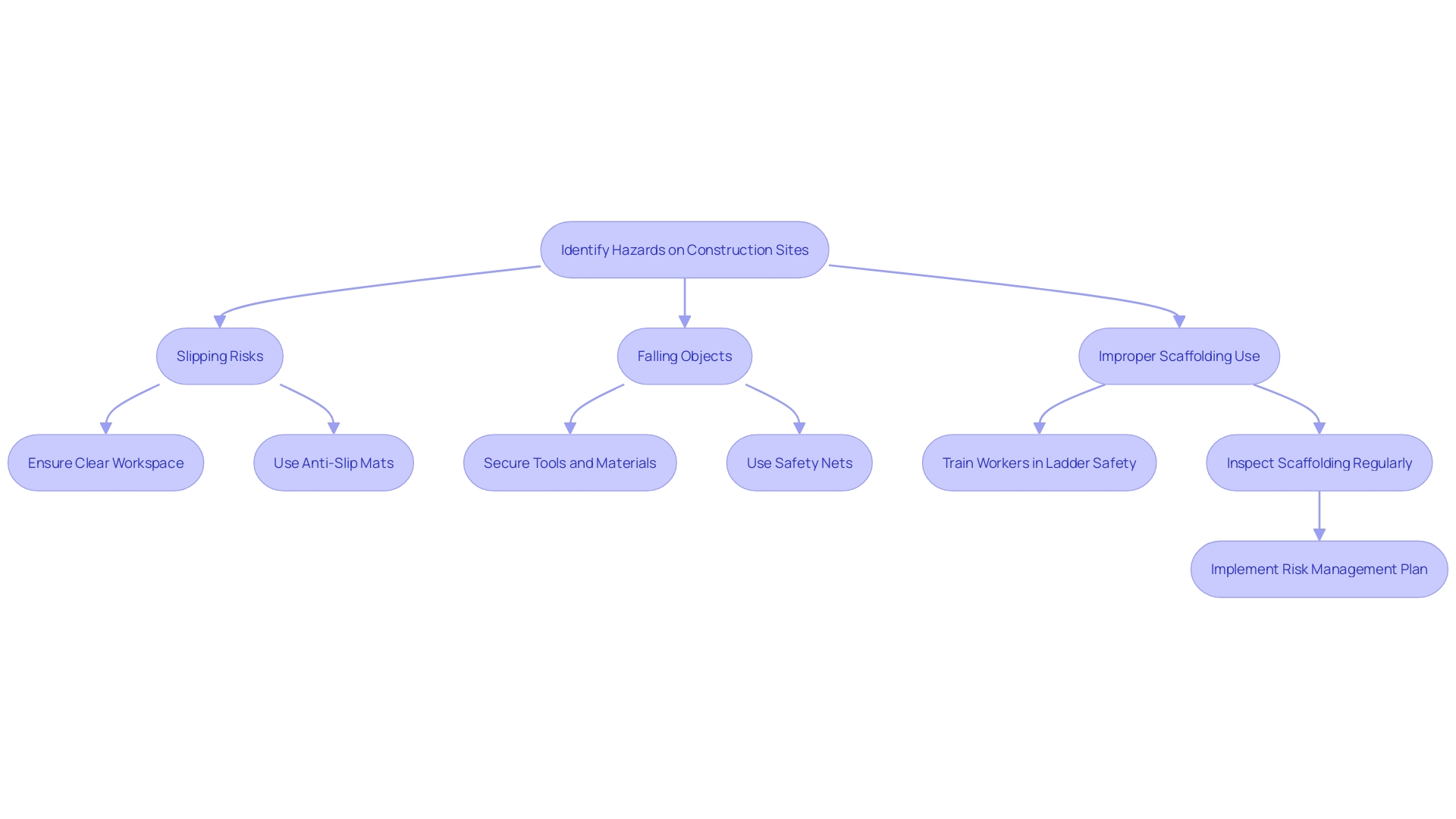
Conclusion
Selecting the appropriate 50-foot extension ladder is essential for ensuring safety and efficiency in various tasks. By considering factors such as material, weight capacity, and ladder type, users can make informed choices that cater to their specific needs. Regular inspections and maintenance are vital, as they help identify potential issues before they compromise safety.
Proper setup techniques, including adhering to the 4-to-1 rule, further enhance stability and reduce risks during use.
Safe climbing and descending practices, alongside awareness of environmental conditions, play a crucial role in minimizing accidents. The importance of having a spotter and being vigilant about wind conditions cannot be overstated, especially when working at significant heights. Compliance with OSHA regulations is not only a legal obligation but also a fundamental aspect of maintaining a secure work environment.
Regular training sessions ensure that all users are well-versed in ladder safety protocols, significantly reducing the likelihood of accidents.
By understanding common hazards and implementing proactive measures, organizations can create a safer workspace. Prioritizing training and awareness fosters a culture of safety that benefits everyone involved. Ultimately, investing in the right ladder, adhering to safety guidelines, and promoting ongoing education are key strategies for enhancing safety and productivity on the job site.




